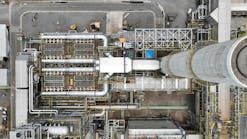EPA proposes air emissions requirements for refineries
This article was updated May 19.
The US Environmental Protection Agency proposed making refiners measure benzene emissions around their facilities’ fences and make the results publicly available.
Its May 15 proposal also would require storage tank upgrades, including controls for smaller tanks; establish flares to ensure that waste gases are properly destroyed; and set emissions standards for delayed coking units that it said are currently a significant unregulated source of toxic air emissions at refineries.
EPA will accept comments on the proposal for 60 days following its publication in the Federal Register. It also intends to hold public hearings near Houston and Los Angeles, and expects to finalize the requirements in April 2015.
It estimated that toxic air emissions, including benzene, toluene, and xylene, would be reduced by 5,600 tons/year (tpy) if the proposal is fully implemented. Volatile organic compound emissions would be cut by about 52,000 tpy, it said.
“Additionally, these cost-effective steps will have no noticeable impact on the cost of petroleum products at the approximately 150 petroleum refineries around the country,” EPA said.
Oil and gas trade association officials did not agree. “With this proposal, EPA adds to the list of new regulations impacting refineries that come with enormous costs but questionable environmental benefits,” said Howard Feldman, the American Petroleum Institute’s regulatory and scientific affairs director.
“This rule is intended to evaluate what risk, if any, is posed to the public from refinery emissions,” Feldman said, adding, “But EPA has already concluded the risks associated with refinery emissions are low and the public is protected with an ample margin of safety.”
In his initial response on May 15, AFPM Pres. Charles T. Drevna said that while the organization had not had the opportunity to review the EPA risk numbers, it had evaluated the risks based on similar industry emissions data provided to the agency.
“Our analysis showed the risk levels were not appreciably higher than they were the first time the rule was finalized in 2009,” he said. “At that time EPA determined no further action was required.”
Drevna said EPA’s proposal would require monitors at refineries’ outer fences and other unprecedented changes that the risk findings fail to justify. “EPA’s one-size-fits-all approach to this monitoring will require every facility in the United States, regardless of risk, to install monitoring equipment throughout the facility,” he indicated.
“We continue to be supportive of rules that are cost-effective and provide substantial health benefits; unfortunately this rule does not accomplish either of these goals,” Drevna maintained.
Contact Nick Snow at [email protected].

Nick Snow
NICK SNOW covered oil and gas in Washington for more than 30 years. He worked in several capacities for The Oil Daily and was founding editor of Petroleum Finance Week before joining OGJ as its Washington correspondent in September 2005 and becoming its full-time Washington editor in October 2007. He retired from OGJ in January 2020.
